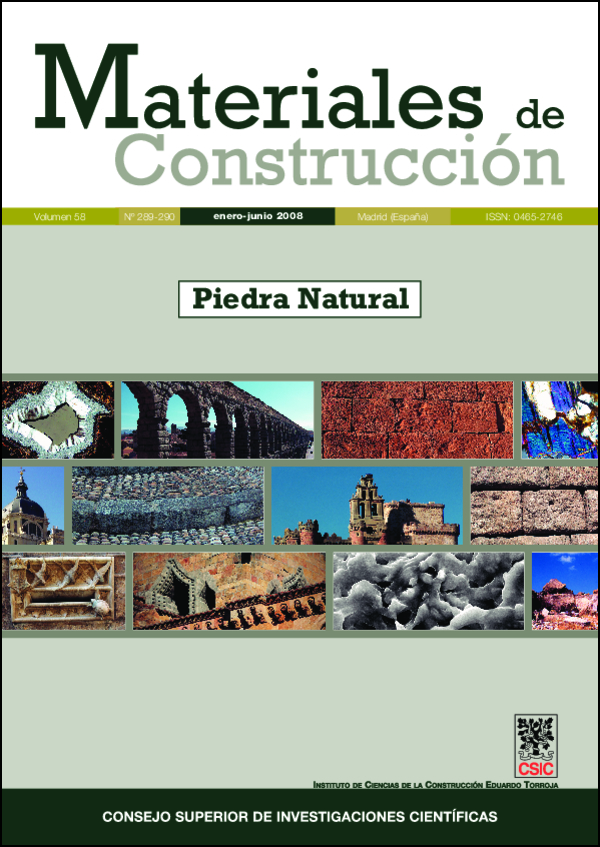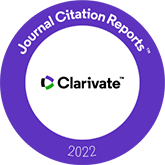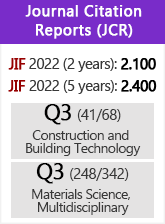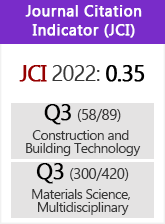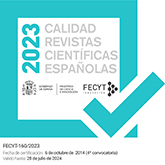Technique for cleaning Tarragona miocene age dolomitized silty limestone, altered by urban pollution
DOI:
https://doi.org/10.3989/mc.2008.v58.i289-290.87Keywords:
cleaning, abrasive blasting, laserAbstract
This paper reports the results of studies conducted to evaluate the most suitable cleaning technique for highly dolomitized, middle Miocene (Serravallian) calcisiltite from Tarragona, Spain, used to build Les Saleses Convent Church in Barcelona. This stone material was widely used in the decorative and sculptural details on Catalonian modernist buildings.
On the church, as on most of the modernist buildings made of this material, the limestone was found to be greatly decayed, with highly reactive black crusts, soluble salts and disaggregation. The cause of these pathologies lay in both the surrounding environment and the original crystalline water-repellent coating applied to the stone surface.
Based on the results of an analysis of the stone, the coating and the alterations, water-based procedures and chemical poultices were ruled out as cleaning methods. In subsequent testing, low pressure abrasive blasting and the localized use of laser techniques were found to yield good results. These two techniques were checked for effectiveness and their parameters were determined.
Downloads
References
[1] AA.VV.: Catàleg del Patrimoni Arquitectònic Històrico-Artístic de la Ciutat de Barcelona, Ficha 740, Ajuntament de Barcelona (1987)
[2] Alcoy, R.: “La arquitectura religiosa de Joan Martorell y el eclectismo fin de siglo”, D’Art, nº 10 (1984), pp. 221-239
[3] NORMAL 20/85. Interventi Conservativi: Progettazione, Esecuzione e Valutazione preventiva.
[4] NORMAL 3/80. Materiali Lapidei: Campionamento.
[5] Dickson, J.A.D.: “A modified staining techniques for carbonates in thin section”. Nature, nº 205 (1965), pp 587 doi:10.1038/205587a0
[6] Gooddard, E.N., Trask, P.D., De Ford, R.K., Rove, O.N., Singewald, J.T., Overberk, R.M.: The Rock-Color Chart. Geological Society of America. (1980)
[7] Folk, R.L.: “Practical petrographic classification of limestones”, Bull. Am. Assoc, Petrol. Geol., nº 43 (1959), pp 1-38.
[8] Folk, R.L.: Classification of Carbonate Rocks, Am. Assoc. Petrol. Geol. Mem. nº 1 (1962), pp. 62-84.
[9] Tucker, M.E., Wright, V.P.: Carbonate Sedimentology, pp. 371-379, Blackwell Scientific Publications, London, 1990.
[10] Prada, J.L.: Caracterización de formas y procesos de alteración observados en piedra de construcción de edad miocénica del área monumental de Tarragona. Tesis Doctoral, Universidad de Barcelona, 1995.
[11] Prada, J.L., Valenciano, A., Navarro, A.: “Procesos de alteración de materiales pétreos en edificios de interés histórico”. Acta Geológica Hispánica, Vol. 30, nº 1-3 (1995-96), pp. 97-110
[12] Iglesias, M.: “Un ensayo de limpieza de superficies delicadas por proyección de abrasivos a baja presión”, AKOBE. Restauración y conservación de bienes culturales, nº 4 (2003), pp. 13-16
[13] Esbert, R.M., Grossi, C.M., Alonso, F.J., Ordaz, J. & Rojo, A.: “Características de la piedra que permiten valorar los efectos de la limpieza láser” Conservación del Patrimonio: Evolución y Nuevas Perspectivas. Actas 1er Congreso GEIIC (2002), pp. 363-367
[14] Lazzarini, L. y Laurenzi Tabasso, M.: Il restauro della pietra. CEDAM, Padova, 1986.
[15] Iglesias, M.: “Eliminación de la costra negra en relieves calcáreos del Pabellón de Quirófanos del Hospital de la Santa Creu i Sant Pau”, VII Reunió Tècnica de Conservació i Restauració. Grup Tècnic, (2000), pp. 181-189.
[16] Iglesias, M., Gea, B., Prada, J.L., Guasch, N.: ”Low-pressure abrasive cleaning of historic building materials”, Proceedings of the International Conference on Heritage, Weathering and Conservation, (2006), pp. 681-686.
[17] Sáiz, B.: La limpieza de materiales pétreos con la técnica láser. Determinación de los parámetros de limpieza láser para una Gárgola de las Torres de Serranos de Valencia. Tesis Doctoral, Universidad Politécnica de Valencia, 2003.
Downloads
Published
How to Cite
Issue
Section
License
Copyright (c) 2008 Consejo Superior de Investigaciones Científicas (CSIC)

This work is licensed under a Creative Commons Attribution 4.0 International License.
© CSIC. Manuscripts published in both the printed and online versions of this Journal are the property of Consejo Superior de Investigaciones Científicas, and quoting this source is a requirement for any partial or full reproduction.All contents of this electronic edition, except where otherwise noted, are distributed under a “Creative Commons Attribution 4.0 International” (CC BY 4.0) License. You may read here the basic information and the legal text of the license. The indication of the CC BY 4.0 License must be expressly stated in this way when necessary.
Self-archiving in repositories, personal webpages or similar, of any version other than the published by the Editor, is not allowed.
